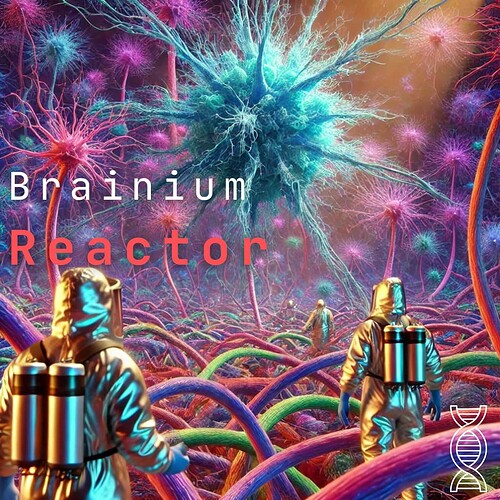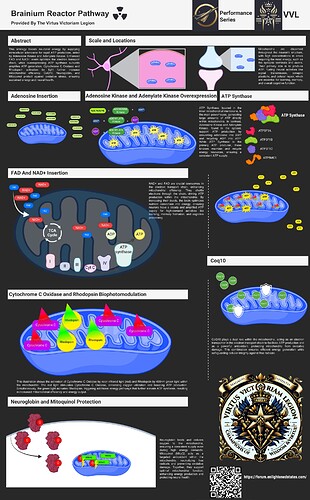More
What would happen if we provided our brains with a supernatural amount of its primary energy currency for it to spend on repair, healing, growth and cognitive performances with complete abundance ?
That’s what we asked, that’s what we answered with: the Brainium Reactor.
Starting with Intracellular Adenosine, bypassing the brain’s natural production pathways ensures an abundant supply of this vital precursor to ATP, the energy molecule that powers every neural function. The coordinated action of Adenosine Kinase and Adenylate Kinase accelerates the conversion of adenosine into usable energy, ensuring a steady and amplified flow of ATP within neurons, which supports not only cognitive function but also cellular repair and regeneration.
Next, we augment the role of FAD (flavin adenine dinucleotide) and NAD+ (nicotinamide adenine dinucleotide), two critical coenzymes involved in the electron transport chain. By increasing their levels, we significantly enhance the brain’s ability to convert nutrients into energy, maximizing mitochondrial efficiency and ensuring that neurons are constantly supplied with the power they need for high-demand tasks like learning, memory formation, and problem-solving.
Within the mitochondria, the over-expression of ATP5F1A, ATP5F1B, ATP5F1C, and ATP5MC1 optimizes the function of ATP synthase, the enzyme complex that produces ATP. This results in a much higher rate of ATP generation, providing the brain with a continuous and abundant energy supply that enhances not just cognitive performance but also resilience under stress.
Cytochrome C Oxidase, the final enzyme in the electron transport chain, is also upregulated. This increases the efficiency of oxygen utilization and ATP production, particularly when stimulated by near-infrared light. The added benefit of photobiomodulation—the use of light to enhance mitochondrial function—further boosts cellular energy levels, improving brain metabolism and supporting long-term neural health.
In a similar manner, Rhodopsin proteins in the mitochondria are activated by 499nm green light, triggering additional pathways that elevate energy production. This light-responsive mechanism enhances the mitochondria’s ability to generate ATP, contributing to improved cellular communication and synaptic plasticity.
Supporting these processes, CoQ10 plays a crucial role as an electron transporter and antioxidant, protecting mitochondria from oxidative damage while ensuring efficient energy production. This dual role helps to sustain high levels of cellular energy over time, without compromising cellular integrity.
Finally, Neuroglobin, a specialized oxygen-binding protein, is upregulated to ensure that neurons receive adequate oxygen supply even under intense energy demands, reducing the risk of oxidative stress. Additionally, Mitoquinol, a targeted mitochondrial antioxidant, works alongside Neuroglobin to neutralize free radicals, safeguarding mitochondrial health while enhancing energy production.
Proteins are produced with rna






 i was trying to fix it but it didn’t help it’s embarrassing
i was trying to fix it but it didn’t help it’s embarrassing

 ?
?
